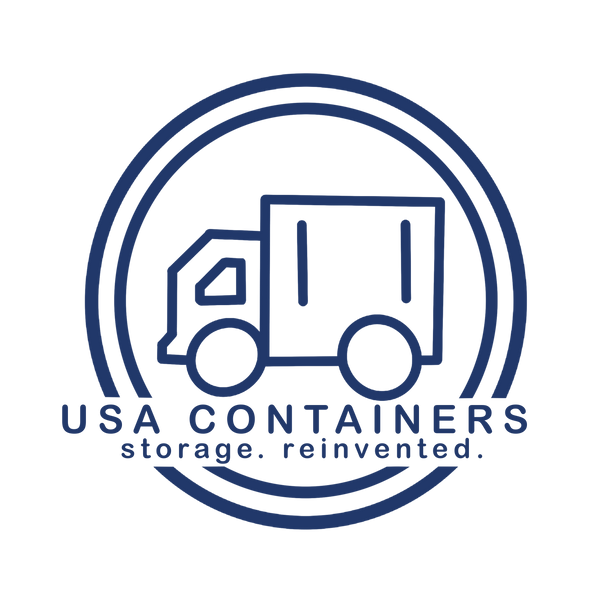
What to Know Before Stacking Shipping Containers for Your Project
Share
Whether you’re thinking of building a multi-level container home, a temporary office, or a mobile storefront, stacking containers offers durability, flexibility, and cost-efficiency, but there are some key rules to follow. Let’s break down how to safely and smartly stack shipping containers—and avoid costly mistakes.
Why Stack Shipping Containers?
Stacking containers is a space-saving solution that is commonly used in container architecture. The benefits include:
-
Maximized vertical space: Ideal for small lots or urban areas.
-
Increased structural strength: When done correctly, stacked shipping containers form a strong, wind-resistant structure.
-
Custom design flexibility: Think rooftop decks, mezzanines, and multi-level layouts.
-
Cost-effectiveness: Shipping containers are often cheaper than traditional building materials.
But to get the most out of these benefits, you need to stack the right way.
1. Choose the Right Containers
Before you even think about stacking:
-
Inspect for damage: Look for rust, warping, or dents—especially at the corners where the containers connect.
-
Stick to one type: Mixing different sizes (like 20’ and 40’) complicates the stacking process. For stability, uniformity is key.
-
Use ISO-certified containers: These are built to international standards and can handle stacking loads up to six or more containers high.
Pro tip: High-cube containers (9’6” tall) are a popular choice for building because of the extra ceiling space.
2. Understand Load Bearing Points
Shipping containers are designed to carry tremendous weight—but only in specific areas. The corner castings (those heavy-duty steel blocks at each corner) are the load-bearing heroes of every container.
When stacking:
-
Align corner castings perfectly: This ensures the weight from the upper container is transferred directly down through the corner posts.
-
Avoid offset stacking unless supported: If you’re creating a cantilevered or staggered design, you’ll need additional steel beams or columns to redistribute the load.
Misalignment or unsupported designs can lead to dangerous instability.
3. Use Twist Locks or Stacking Pins
You wouldn’t put a second floor on your house without securing it—and the same applies to shipping containers.
Twist locks and stacking pins are essential for locking containers together:
-
Twist locks connect the corner castings of two containers and rotate to lock them in place.
-
Stacking pins slide into the corner castings and help align and secure the containers.
This hardware isn’t just about safety—it’s about compliance with building codes and insurance requirements.
4. Prepare the Right Foundation
Your stacked containers are only as strong as their foundation. Shipping containers are heavy so it’s important that the ground beneath is solid and level.
Common foundation options include:
-
Concrete slabs: Durable and perfect for permanent installations.
-
Piers or footings: Ideal for uneven terrain or when you need clearance underneath.
-
Steel beams or cribbing: Often used in temporary or mobile installations.
No matter the foundation type, ensure it supports point loads under each corner post.
5. Consider Wind and Weather
Stacked shipping containers can act like sails in high winds, especially when elevated or in open areas. You may need:
-
Anchoring systems: Bolting the containers to the foundation or using ground anchors.
-
Bracing or cross ties: Especially important for tall stacks or modified containers with windows/doors.
-
Drainage planning: You don’t want water to pool between stacked units or on the roof.
If you’re building in an area prone to hurricanes, tornadoes, or earthquakes, consult a structural engineer.
6. Plan for Modifications
Modifying containers (cutting out doors, windows, or interior walls) changes their structural integrity. If you're stacking modified containers:
-
Reinforce the structure: Add steel framing around large openings.
-
Work with a pro: DIY cuts can compromise the frame if done incorrectly.
-
Stack unmodified containers on the bottom: Keep the strongest units at the base for better support.
Also, think ahead about utilities—plumbing, wiring, and HVAC are easier to install when you plan before stacking.
7. Get the Right Equipment
Stacking shipping containers isn’t an easy project unless you have access to:
-
Cranes or forklifts: Shipping containers are heavy steel boxes and you’ll need the right equipment to lift them.
-
Experienced operators: Hire professionals who know how to maneuver and align containers safely.
8. Check Local Codes and Permits
Before you start building your shipping container home, check with:
-
Local building authorities
-
Zoning departments
-
Homeowners' associations (if applicable)
Rules around stacking containers vary widely. Some areas welcome creative shipping container homes; others treat them like temporary structures or restrict their use entirely.
Stacking shipping containers opens the door to creative, scalable, and sustainable design. With the right planning, materials, and safety protocols, you’ll have a strong, stylish structure.
Fill out the form below for a free shipping container quote from USA Containers:
